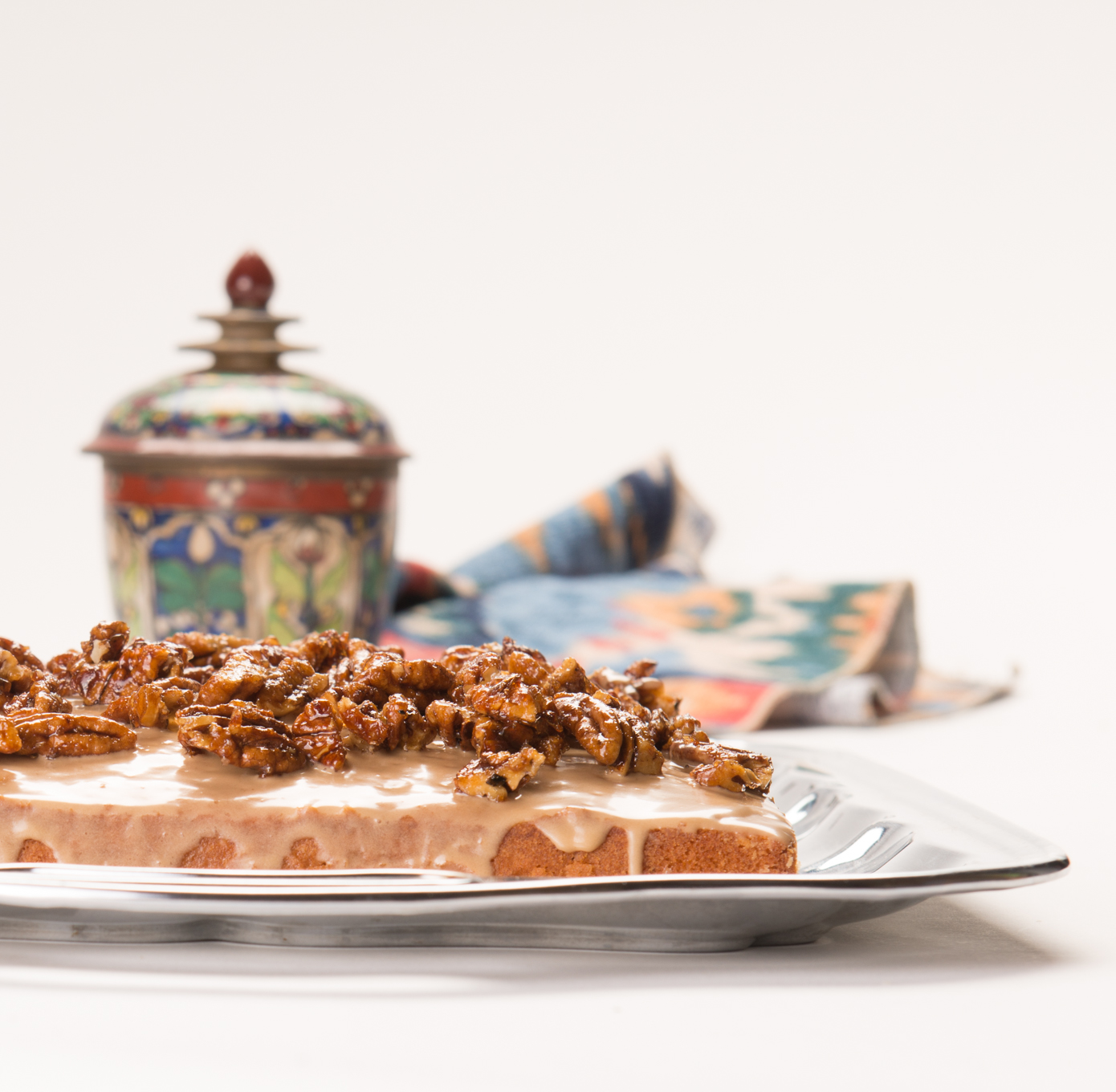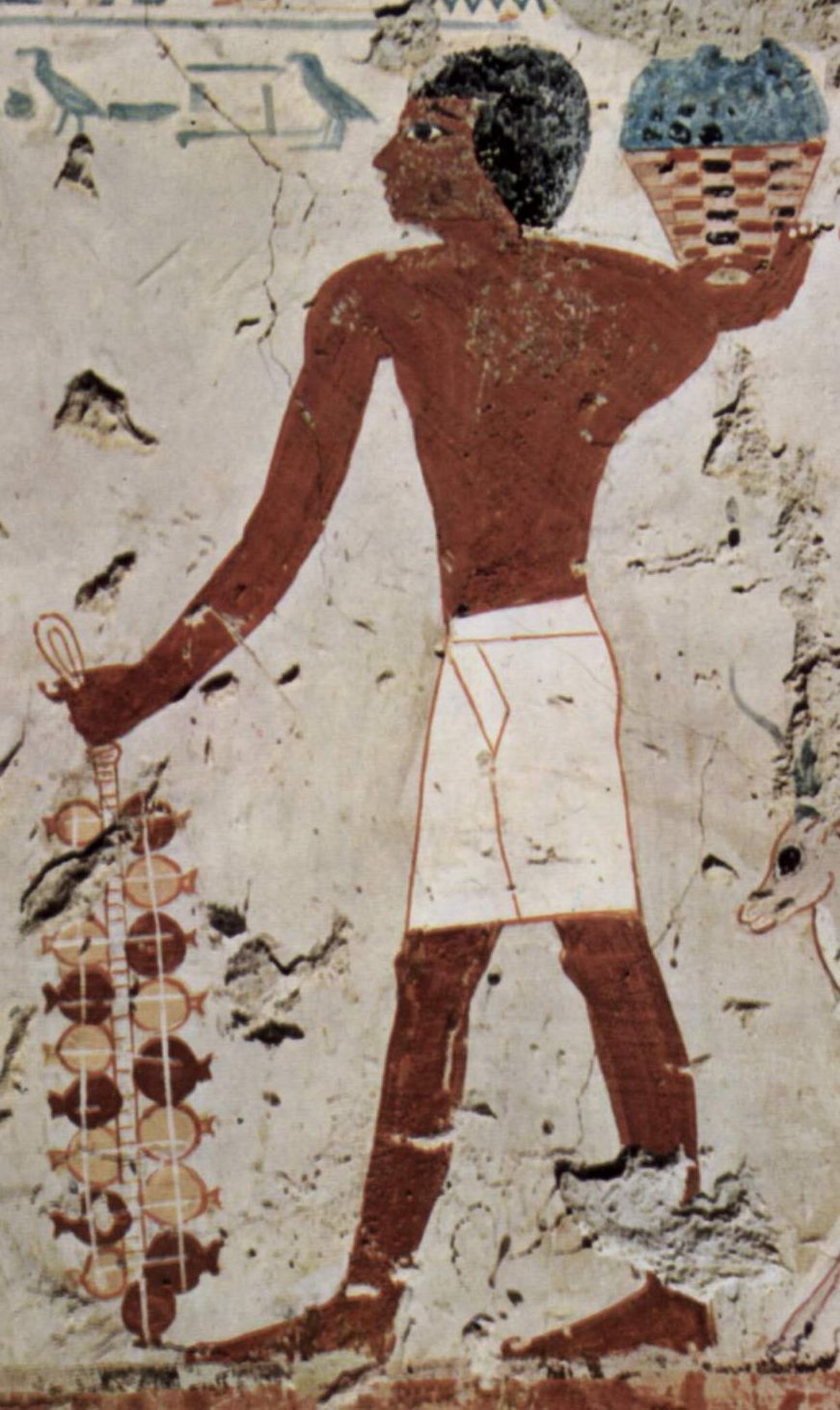First, pomegranate molasses is readily available. You can do this.
Second, this butter cake is absolutely delicious. I don’t have the words…
I discovered pomegranate molasses some time ago. I shop at a local Jons International Marketplace and they have not one but several brands of pomegranate molasses available. If you don’t live near a Jons, you also can buy the molasses online from Amazon or at just about any Middle Eastern market. Or, you can make your own simply by boiling raw pomegranate juice into a syrupy reduction.
Pomegranate molasses is an ingredient commonly used in Middle Eastern recipes in marinades, salads, sauces and mezzes. The molasses has an intense tangy/tart/sorta sweet flavor. Here in the West, it is sometimes drizzled on oatmeal, stirred into coffee or tea or used to glaze foods. Its uses are almost endless. Certainly, you could use pomegranate molasses interchangeably with balsamic vinegar.
Curious about the origins of the use of the pomegranate in the diet?
Pomegranates are believed to be native to Iran and the Himalayas in Northern India where they have been grown for more than 4000 years. Desert caravans (and, later, sea voyages) introduced pomegranate cultivation to other areas– the Mediterranean, Asia, Africa and beyond. Those areas quickly embraced the pomegranate not only into their diets but also into their arts and culture.
In Egypt, for example, the fruit was buried with the dead to ensure a smooth passage to the afterlife and pomegranates were depicted in the artwork on the walls of Egyptian tombs.The Egyptians also enjoyed pomegranate wine.
In Islam it is believed that the gardens of paradise include pomegranate trees and Muhammad urged his followers to consume the fruit. Some believe that each pomegranate has one aril descended directly from heaven.
The pomegranate also is praised in The Old Testament. Here is Boticelli’s The Virgin and Child with a Pomegranate. In Christianity, the pomegranate has long been used as a traditional symbol of the Passion.
While Europe was slow to warm to the pomegranate, the fruit eventually caught on. Shakespeare used the pomegranate as a symbol of true love in Romeo and Juliet. You can’t get a better promo that that!
“Wilt thou be gone? it is not yet near day:
It was the nightingale, and not the lark,
That pierc’d the fearful hollow of thine ear;
Nightly she sings on yond pomegranate tree:
Believe me, love, it was the nightingale.”
Nearer to home, pomegranate trees were brought to the Americas by Spanish conquistadores and the fruit was introduced to California by Spanish missionaries in the 1760s. There is a pomegranate-themed fresco at Mission San Miguel Arcangel. Today, over ninety percent of the pomegranates grown in the United States production are grown in California’s San Joaquin Valley.
This recipe is adapted from one by John Willoughby that appeared in the food section of the New York Times. Willoughby was executive editor of Gourmet Magazine, a senior editor for Cook’s Illustrated and writes for magazines like Saveur and Metropolitan Home. Here is the link to the original recipe from which this recipe was adapted: https://cooking.nytimes.com/recipes/1013092-pomegranate-molasses-butter-cake .
Ingredients
- 1 stick unsalted butter (softened)
- 1 1/2 C. flour (plus more for dusting pan)
- 1 1/2 t. baking powder
- 1/2 t. salt
- 1/2 C. milk
- 3 T. pomegranate molasses plus 1 t.
- 3/4 C. granulated sugar plus 4 t.
- 3 large eggs
- 1 C. powdered sugar
- 6 T. light cream
- 3/4 C. roughly-chopped pecans (or walnuts)
Instructions
- Preheat oven to 350 degrees F. Prepare 9-inch square baking pan by buttering it and dusting it with flour.
- Sift flour, baking powder and salt together. Set aside.
- Mix milk and 2 T. pomegranate molasses in another bowl. Set aside.
- In the large bowl of your stand mixer, cream butter and 3/4 granulated sugar together until the butter is a light yellow color and the mixture is fluffy. Add the eggs to the butter mixture, adding the eggs one at a time and mixing after the addition of each egg.
- Mix the flour and milk mixture into the egg/butter mixture by adding one-third of the flour then half the milk. Continue mixing ingredients ending with the flour. Mix the ingredients until they are just combined. Don't over mix.
- Pour the prepared batter into your pan and bake for 35 to 40 minutes or until a toothpick inserted into the center comes out clean. Cool the cake in the pan for about ten minutes and then run a sharp knife around the edge of the pan to release the cake. Turn the cake out onto a rack and then turn the cake right side up again.
- To prepare the glaze, whisk powdered sugar, cream and 1 T. pomegranate molasses together. If your glaze is too thick, add a bit of milk to thin it. Brush the glaze over your cooled cake, letting it drip down the sides.
- Prepare the glazed nuts to top your cake by combining them in a small nonstick skillet (over medium high heat) with 1 t. pomegranate molasses and 4 t. sugar. Stir the nut mixture constantly, watching carefully to be sure the mixture doesn't burn. You want the sugar to melt and coat the nuts. This will take about 1-2 minutes. Let the nuts cool. Break the nuts apart and arrange the nuts over the top of the cake.





 Save Recipe
Save Recipe